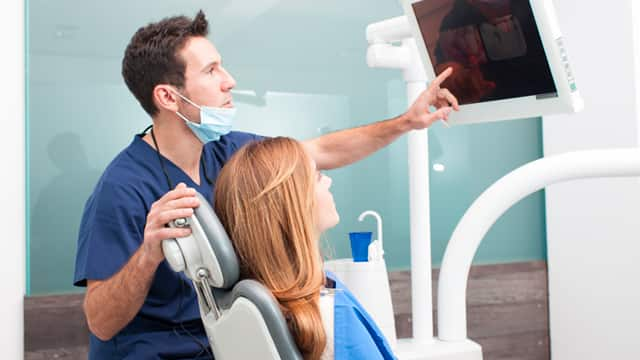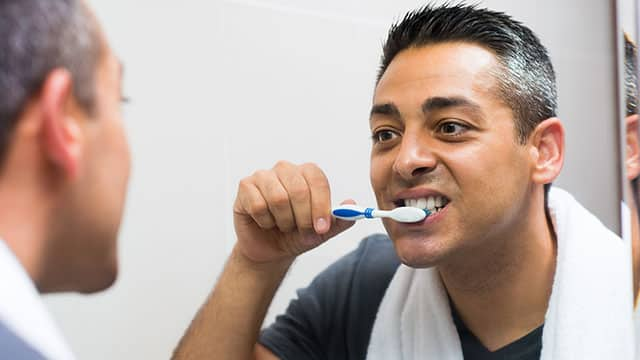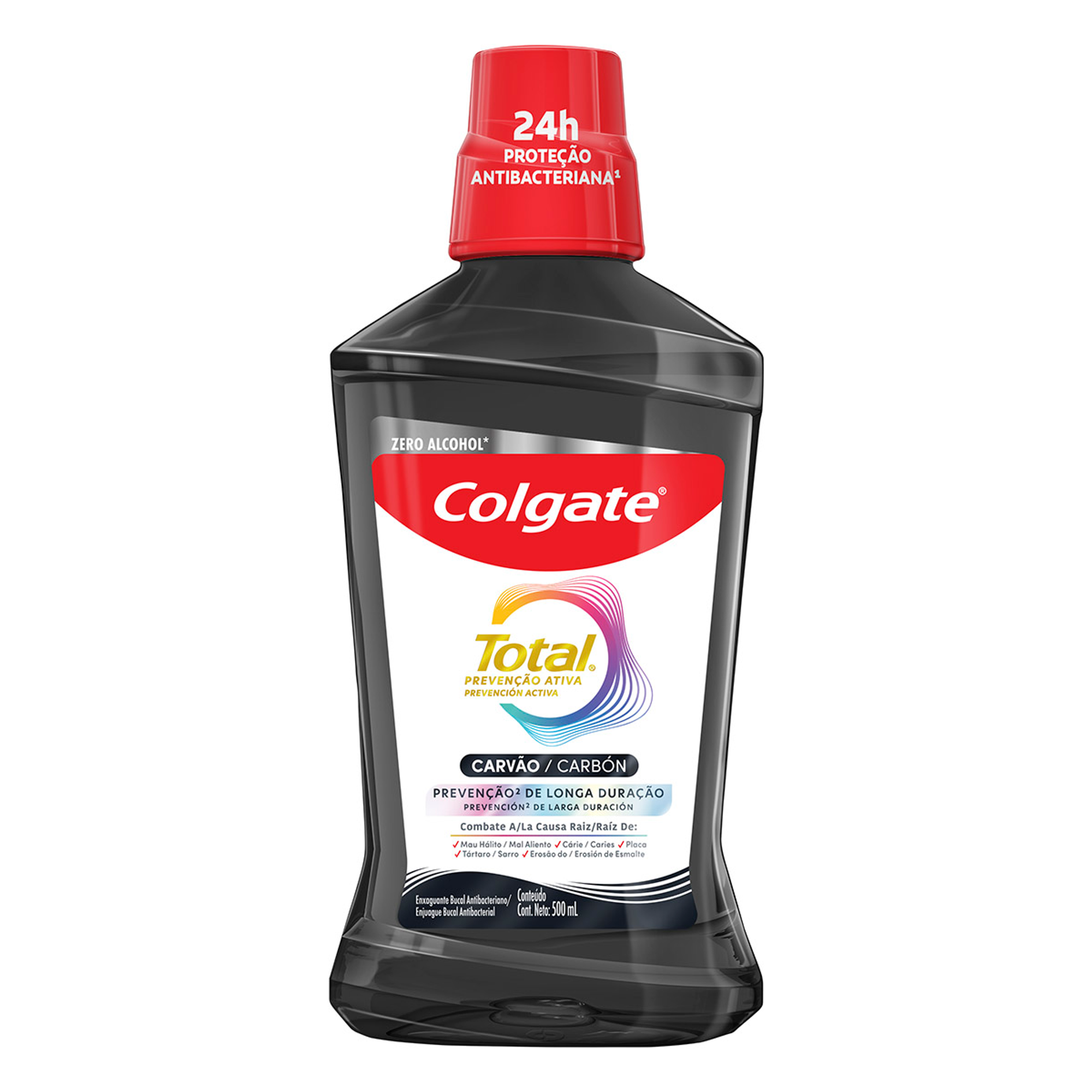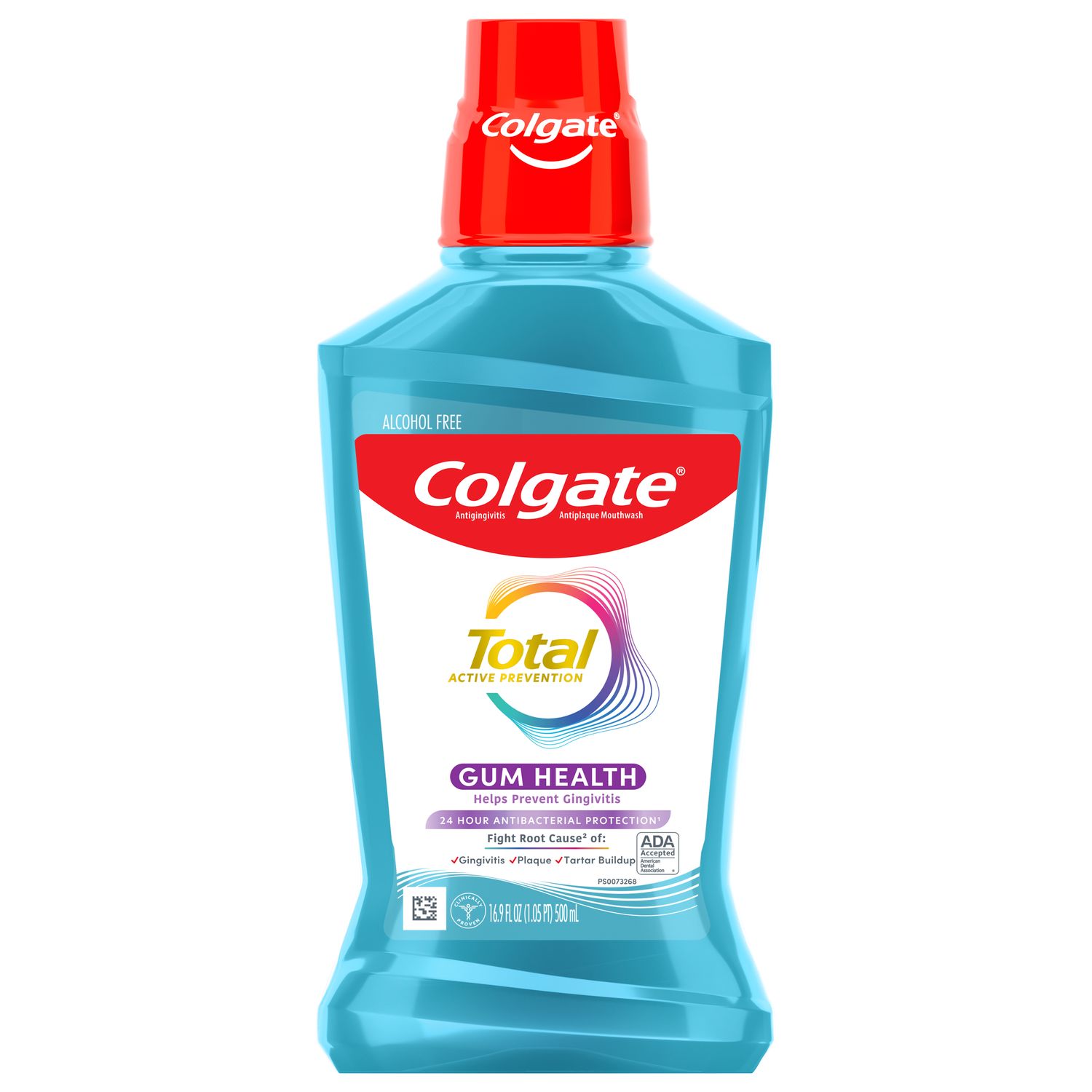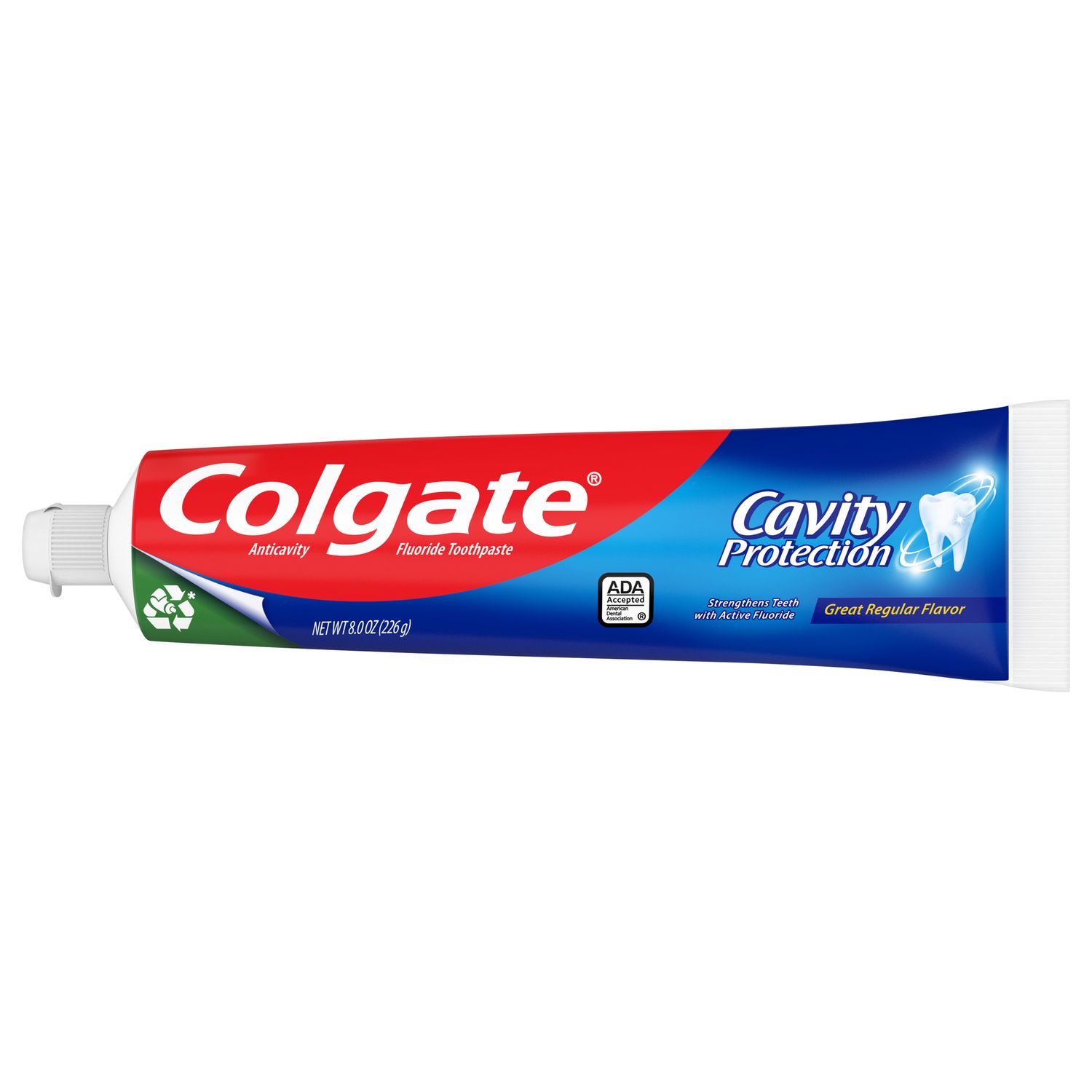Dental Implants
Designed to replace a missing tooth, a dental implant has several parts, including a titanium artificial root and a crown attached to the top. Increasingly a popular dental prosthetic choice, the advantages of dental implants include:
However, dental implants aren't immune to plaque buildup. In fact, bacterial plaque accumulation at the base of the implant can cause peri-implantitis. The American Academy of Periodontology defines peri-implantitis as gum inflammation around the implant, causing deterioration in the tissue and bone supporting the dental implant.
How common is peri-implantitis? Research published in the journal Antibiotics notes studies estimating that around 40 percent or more of five-year-old implants could be vulnerable to peri-implantitis. If left untreated, the infection can lead to the loss of the implant.
How to Care for Your Dental Implant
The payoff for taking care of your implant is that it can last you several years – plus save you the disruption and the expense of dealing with such conditions as peri-implantitis. To prevent implant plaque buildup leading to peri-implantitis, step up your oral hygiene routine:
If you have a history of periodontal (gum) disease or diabetes, you might be more at risk of developing peri-implantitis. Talk to your dental and medical professionals about any additional steps you need to take.
Bonus: Steps to prevent peri-implantitis can also prevent tooth decay on your natural teeth!
Symptoms of an Implant Infection
You'll notice these signs if you start developing peri-implantitis:
It's important to talk to your dental provider about any concerns you have regarding your implant. Be sure to report any changes you notice between dental visits.
Treating Peri-Implantitis
If you develop peri-implantitis symptoms, don't hesitate to contact your dental professional to help resolve the infection and avoid implant failure. Peri-implantitis treatments vary depending on the person being treated, the type of implant, and the severity of the peri-implantitis, notes the journal Antibiotics.
Each treatment has advantages and disadvantages, so find out from your dental professional what's right for you. Some treatments can be most effective working in combination with other treatments.
Antibiotics: In pill form or placed directly on the infected area around the implant, antibiotics work be on moderate infections.
Mechanical Removal: Certain devices can remove bacterial plaque and restore the tissue. Devices used in this procedure include titanium brushes, dental curettes, and air-abrasive and ultrasonic devices.
Laser Therapy: A dental professional might choose to use laser therapy to destroy the bacteria around the implant.
Surgery: Perhaps the most effective way to treat peri-implantitis, surgical treatments vary. A couple of surgeries involve pulling back the gum tissue to create flaps for removing the plaque and bacteria. Another involves bone regeneration, which might include bone grafts.
After treatment, you can expect to have follow-up appointments throughout the following months. That way, your dental professional can track your healing progress and ensure the implant is stable.
A great choice for teeth replacement, dental implants let you live your life just as with natural teeth. But like your natural teeth, implants need proper care to prevent diseases such a peri-implantitis. Though treatments abound, prevention will serve you well – and keep you smiling.
Oral Care Center articles are reviewed by an oral health medical professional. This information is for educational purposes only. This content is not intended to be a substitute for professional medical advice, diagnosis or treatment. Always seek the advice of your dentist, physician or other qualified healthcare provider.
ORAL HEALTH QUIZ
What's behind your smile?
Take our Oral Health assessment to get the most from your oral care routine
ORAL HEALTH QUIZ
What's behind your smile?
Take our Oral Health assessment to get the most from your oral care routine






